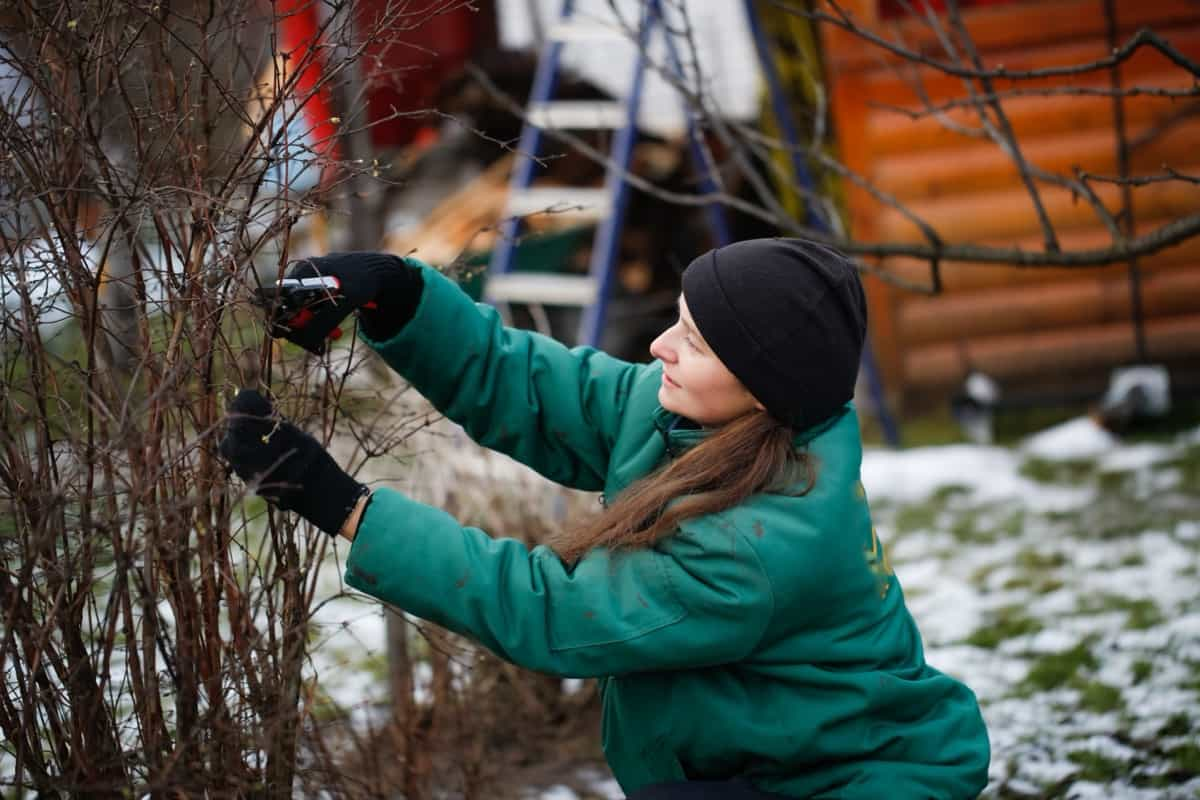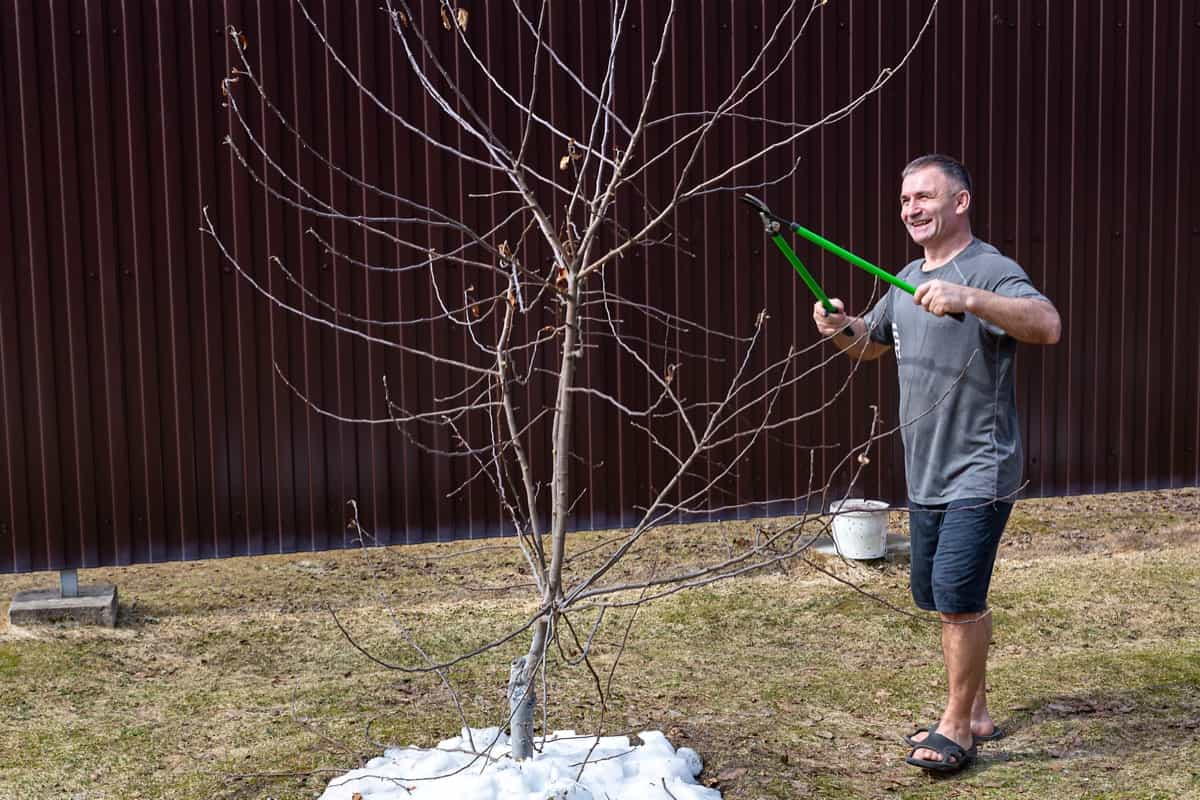Winter pruning is a crucial aspect of maintaining the health and beauty of your plants. While it may seem counterintuitive to prune during the cold season, there are several benefits to doing so. Understanding dormancy and its impact on pruning and Winter Garden maintenance can help you make informed decisions about when and how to cut back your plants.

Winter Pruning Guide
Benefits of Pruning in the Cold Season
When it comes to Winter pruning benefits, winter pruning allows for better visibility of the plant’s structure. With fewer leaves obstructing your view, you can more easily identify damaged or diseased branches that need to be removed. Additionally, winter pruning stimulates new growth in the spring. By strategically cutting back certain branches, you encourage the development of stronger, healthier shoots once warmer weather arrives. Furthermore, winter pruning helps shape your plants for optimal growth.
Understanding Dormancy and Its Impact on Pruning
Understanding dormancy is key when it comes to Pruning in winter months. Dormancy is a period of rest that many plants go through during colder months when temperatures drop and daylight hours decrease. During this time, sap flow slows down significantly as energy is conserved within the roots. Pruning during dormancy minimizes stress on the plant because it reduces sap loss through freshly cut wounds. Additionally, without active growth happening above ground, there’s less risk of shock or damage from cutting back branches.
Tools and Equipment for Winter Pruning
Essential Pruning Tools
When it comes to Winter plant care tips, having the right tools for Winter pruning is essential. These tools not only make the job easier but also ensure that you can make clean and precise cuts. First up are the hand pruners or secateurs. These are perfect for making small cuts on branches up to ¾ inch in diameter. For larger branches, you’ll need loppers. They have longer handles and more cutting power than hand pruners, allowing you to trim thicker branches with ease.
Sanitizing Equipment to Prevent Disease Spread
To prevent disease spread while pruning, it’s crucial to sanitize your tools between each cut. You can use rubbing alcohol to disinfect your tools. Additionally, investing in good-quality gloves will protect your hands from thorns and other potential injuries during the pruning process.
Deciduous Trees and Shrubs
Identifying Pruning Needs
When it comes to pruning deciduous trees and shrubs during the winter season, there are a few key factors to consider. First and foremost, understanding the needs of each plant is crucial. One important aspect of pruning deciduous trees and shrubs is maintaining their overall health. By trimming dead or diseased branches, you can prevent further damage from spreading. Additionally, proper pruning techniques can promote better air circulation and sunlight penetration into the canopy, resulting in healthier growth.
Techniques for Healthy Cuts
To make healthy cuts while cutting back plants in winter, it’s important to use sharp tools that won’t crush or tear the branches. Clean cuts not only reduce stress on the plant but also minimize potential entry points for pests or diseases. When making cuts on larger branches, it’s essential to follow proper technique by using three separate cuts: one on the underside of the branch about 6 inches away from where you want to remove it; another cut a few inches further out along the top side of the branch; finally, a third cut just outside of where you want to remove it completely.
In case you missed it: How to Grow Hawthorn Trees: Propagation, Planting, Pruning, and Winter Care

Evergreens and Conifers
Timing and Tips for Pruning Evergreens
Evergreens and conifers add year-round beauty to any landscape with their lush green foliage. Timing is crucial when pruning evergreens, as it can impact their growth and overall health. In general, early winter or late fall is the best time to prune evergreens. This allows enough time for new growth to emerge before the next growing season begins.
It’s important to note that certain types of evergreens, such as pine trees, should be pruned in early spring instead. When pruning evergreens, there are a few tips you should keep in mind. First and foremost, avoid removing more than one-third of the tree’s total foliage at once. Removing too much can stunt its growth and weaken its structure.
Special Considerations for Conifer Pruning
Special considerations must be taken when pruning conifers like Cedars or Junipers due to their unique growth patterns and structures. These trees often have multiple leaders (main upright stems), so it’s crucial not to cut them all at once. Instead, select a dominant leader and remove competing ones gradually over several years. Another important aspect of conifer pruning is understanding how they naturally grow in layers or tiers. When Winter tree trimming, aim for an even shape while maintaining this natural layering effect.
Fruit Trees and Bushes
Enhancing Fruit Production Through Pruning
Fruit trees and bushes are a delight to have in any garden or orchard. Pruning these plants during the winter season is crucial for enhancing fruit production and maintaining their overall health.
Winter Pruning Strategies for Various Fruit Trees
When it comes to Winter pruning for fruit trees, pruning Peach trees involves thinning out the branches to improve airflow and prevent overcrowding. Additionally, removing some of the older wood stimulates new growth and encourages higher fruit production. For Apple trees, it’s important to remove any dead or diseased branches, as well as those crossing each other.
When it comes to berry bushes like Raspberries or Blackberries, winter pruning is an excellent opportunity to eliminate weak or damaged canes. By doing so, you promote stronger new growth that will bear more abundant berries come summer. For citrus trees such as Oranges or Lemons, selective pruning can help maintain their shape while allowing sunlight into the inner branches. This promotes proper ripening of fruits throughout the tree instead of just on the outer edges.
Roses and Flowering Shrubs
Preparing Roses for Spring Blooming
When it comes to roses and flowering Shrubs pruning in cold weather, proper pruning is essential for promoting healthy growth and abundant blooms. As winter sets in, it’s the perfect time to prepare your roses and shrubs for a spectacular display in the spring. For roses, start by removing any dead or diseased branches. This prevents the spread of disease and encourages new growth. Next, prune back any crossing or rubbing branches to improve air circulation.
In case you missed it: Pruning Houseplants – Basics, Ideas, Techniques, Tips For Indoor, Balcony

Pruning Methods for Flowering Shrubs
When it comes to Winter pruning for flowering plants, each variety has its own unique pruning needs. Some shrubs benefit from Winter plant rejuvenation pruning, where old wood is removed to encourage new growth from the base. Others require more selective pruning to shape their form and promote flowering on new wood. Regardless of the specific method used, always make clean cuts just above an outward-facing bud or branch junction. This ensures that new growth will be directed in a desirable direction.
Ornamental Grasses and Perennials
Cutting Back Ornamental Grasses
Ornamental grasses and perennials are a beautiful addition to any garden, adding texture, movement, and color throughout the year. When cutting back ornamental grasses, late winter, before new growth emerges is the best time to prune these plants. Use sharp pruners or shears to cut back the entire plant close to the ground. This will help remove dead foliage and promote fresh growth for the upcoming season.
Managing Perennials for Health and Vigor
Managing perennials requires a slightly different approach. Some perennials benefit from being cut back in late fall or early spring when they enter dormancy. Removing dead stems and foliage not only improves their appearance but also prevents diseases from overwintering in your garden. However, not all perennials need drastic pruning. Some benefit from simply removing spent flowers or trimming back leggy growth during the growing season to encourage more blooms.
Safety Measures and Techniques
Proper Pruning Techniques to Avoid Injury
When it comes to Dormant season pruning techniques, safety should always be a top priority. Proper pruning techniques can help you avoid injury and promote healthy growth in your plants. It’s important to use the right tools for the job. Invest in high-quality pruning shears, loppers, and saws that are sharp and well-maintained.
Dull or damaged tools can lead to uneven cuts and increase the risk of accidents. Before you start pruning, make sure to sanitize your tools. This prevents the spread of diseases between plants. Simply wiping down your equipment with a solution of bleach or rubbing alcohol will do the trick.
Safety Gear and Best Practices
When making cuts, always follow the proper technique. Start by identifying any dead or diseased branches that need removal. Then, make clean cuts just above a bud or lateral branch using smooth strokes. Avoid leaving stubs as they can become an entry point for pests and disease. Wearing appropriate safety gear is also crucial when pruning. Never forget about ladder safety when pruning taller plants.
Post-Pruning Care
Wound Care and Healing
One crucial aspect of post-pruning care is wound care. When making cuts during pruning, you create wounds on the plant that need attention. Applying a wound dressing or sealant can help protect the cut surface from disease and pests. In addition to wound care, mulching is another essential step. Mulch retains moisture in the soil and regulates temperature fluctuations around the plant’s roots. Apply organic mulch around your pruned plants, being careful not to pile it up against the trunk or stems.
Mulching and Watering After Pruning
Proper watering is also crucial after pruning. While some plants may require more water immediately after pruning due to increased stress, others may need less frequent watering until new growth appears. It’s important to monitor each plant’s moisture needs individually. Remember that post-pruning care should be tailored to each specific type of plant and its requirements.
Common Mistakes to Avoid
Pruning and Its Consequences
Overenthusiastic gardeners may be tempted to go overboard with pruning in the winter, but it’s important to know when enough is enough. One common mistake that many people make is over-pruning their plants. While pruning can promote healthy growth and shape your plants, excessive trimming can weaken them and leave them vulnerable to disease or pests.
In case you missed it: Ultimate Guide to Orchid Aerial Roots Care: Tips for Healthy Growth and Maintenance

Timing Errors: When Not to Prune
When it comes to Seasonal pruning tips, knowing when not to prune is just as crucial as knowing when to prune. Some plants have specific flowering times or growth patterns that should be respected. For example, spring-blooming shrubs like Lilacs and Forsythias are pruned immediately after they finish flowering. Another timing error is pruning during a plant’s active growth period. This can inhibit its ability to heal properly. It’s best to wait until the dormant season for most plants, such as late fall through early spring, when they are not actively growing.
Conclusion
Winter pruning is an important practice for maintaining the health and vitality of your plants. By understanding the benefits of Cold season plant trimming and considering the specific needs of different plant types, you can effectively shape and rejuvenate your garden.
- Flower Garden Designs and Layouts for Beginners
- Planting and Spacing Techniques in Papaya: A Beginner’s Guide
- Growing Gold: Essential Techniques for Planting Pineapples
- How to Make Kalanchoe Plant Bushy: Home Remedies and Solutions
- 11 Reasons Why Your Gardenia is Not Blooming: Home Remedies and Solutions
- Eco Elegance: The Guide to Designing a Drought-Tolerant Landscape
- Gardening on a Slope: Strategies for Hillside Landscaping
- Nourish and Flourish: Top Organic Mulches for Thriving House Plants
- Everything You Want to Know about Indian Mogra Flower: Discover Uses and Growing